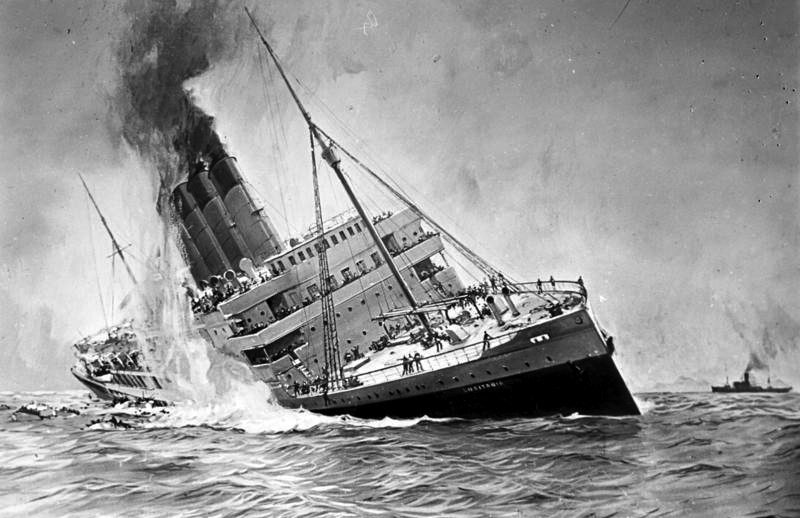World War I ~ Lesson 3 The United States and World War I
|
World War I was fought using trench warfare. This is where large ditches are dug in the ground. The soldiers stayed in the trenches firing at the enemy who were in trenches not far away. |
President Wilson wanted to keep out of the war. Some Americans did take sides. Early in the war the English navy set up a blockade around the Central Powers. This cut off American trade with Germany and Austria-Hungary.

The Germans decided to use submarines called U-boats to break the blockade. The plan was to starve England by cutting off supplies. For their plan to work, the U-boats had to sink unarmed merchant ships without warning and without seeing to the safety of the crew and passengers to do this. |
|

From 1914 to 1917 more than 250 Americans lost their lives on Allied ships that were sunk. The British shipLusitania was sunk in 1915. The Lusitania could cross the Atlantic Ocean in less than 5 days. It was the fastest passenger ship of its time. The Lusitania left New York on May 1, 1915 with 1500 people. Later it was discovered that guns and ammunition for the English army were on board. On May 7, a torpedo struck the ship. One thousand two hundred people were killed including 128 Americans. |
Other ships were sunk as well. President Wilson sent notes to Germany demanding that they stop sinking ships or they would risk a war with the United States. The Germans stopped for a short while.
On January 31, 1917 Germany announced they would sink any ships sailing into the war zone. In February the British got hold of a letter from a German named Arthur Zimmermann to the Mexican government that said the Germans were planning to sink American ships. The letter asked Mexico to join the Germans. In return Mexico would get Texas, New Mexico, and Arizona after the war. This letter was later referred to as the Zimmermann Telegram.
On April 17, 1917 President Wilson asked for a declaration of war against Germany from Congress.
Allied and Neutral Ships Lost During the War
| 1914 | 1915 | 1916 | 1917 | 1918 | |
|---|---|---|---|---|---|
To submarines |
3 |
396 |
964 |
2,439 |
1,035 |
To surface craft |
55 |
23 |
32 |
64 |
3 |
To mines |
42 |
97 |
161 |
170 |
27 |
To aircraft |
- |
- |
- |
3 |
1 |
Table from The World War I Source Book by Philip J. Haythornthwaite

